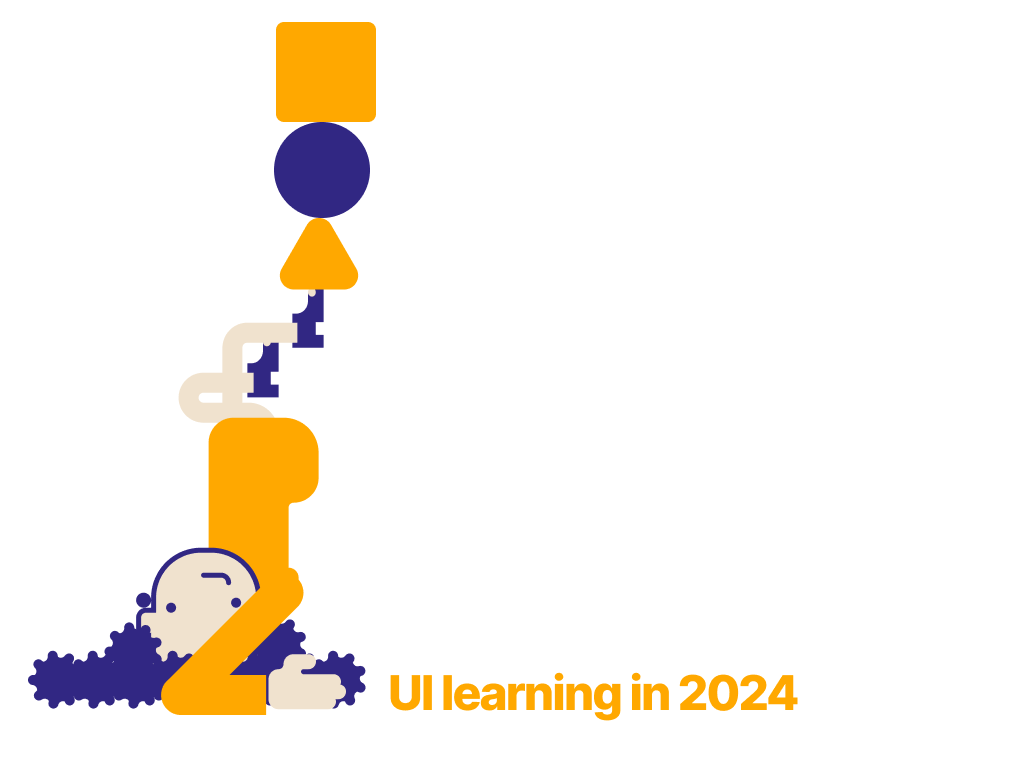I teach UI Interaction design and work with tools like Figma, in my classes we analyze in-depth the tool's mechanics to achieve complex interfaces... My students face several pain points that can impact their learning experience and development.
These are some of the key challenges as well as some Ideas and solutions that we constantly develop and practice in a very intensive exchange

AI overload
What they say:
Figma’s new AI lets anyone create a first design draft.
What they think:
everyone can translate an idea to a prototype now??
What they feel:
Now an AI prompt writer replaces the UI designer ?
Solutions:
In this summer of 2024 we are figuring out what does this means, these are first thoughts:
AI delivers very generic design
Understanding what AI generates, interpreting it, and continually adjusting and developing it are essential for gaining a deeper understanding of these tools
It's worth keeping in mind that alongside AI solutions, effective planning and strategizing continue to be essential.
Details and specificity are important
Take your time
In our quest to become better UI designers, we need to remain open to exploring alternative options and embracing new directions. Iterating and refining our designs over time is an integral part of the UI design process.
Information Overload
What they say:
With a vast array of online courses, tutorials, articles, and books, students feel overwhelmed by the sheer volume of information.
The field of UI/UX is constantly evolving, making it challenging to stay current with the latest trends, tools, and best practices.
Solutions
Curated learning paths
Develop thoughtfully planned and meticulously curated learning paths that provide students with a clear, step-by-step progression through essential topics in a logically sequenced order.
Regular updates
Provide a centralized platform (Slack is a great Tool, this works for us, it relies of course on shared maintenance..)
Provide or point to newsletter that highlights the latest trends, tools, and best practices, for example this one!
Lack of Practical Experience
What they say:
Many students struggle to find real-world projects or internships to apply their skills and gain practical experience.
Building a strong portfolio that showcases a range of skills and projects is often a daunting task.
Solutions:
Projects, exercises, ideas exchange
Project-Based Learning
Integrate hands-on projects into the curriculum
Create projects that mimic real-world challenges, helping students build practical skills. This is still only a part of the Process and that is important to point,
We still didn't have to work with the product owner, the developer team, or to consider marketing or sales decisions. Nevertheless in this part of the Process is crucial
Feedback and Mentorship:
What they say:
Receiving constructive and actionable feedback on their work can be difficult, especially if students rely solely on peer reviews or online communities.
What they need
Office Hours with Instructors
That is also my work:
regular intensive office hours where students can seek personalized feedback and advice.
Striving to achieve mastery with the tools
What they say:
Becoming proficient in different design and prototyping tools involves investing time and effort.
Solutions:
Emphasis on the fundamentals
Start by learning about layout and then move on to auto-layout.
Use pencil and paper for prototyping. Exchange ideas, find, redefine, and clarify concepts. Avoid relying solely on AI and instead focus on learning and implementing design best practices.
Keep in mind that tools will always evolve and change.
Balancing Creativity and Constraints:
What the students say:
Finding the right balance between creative design and practical constraints (e.g., technical limitations, user needs) can be challenging.
Solutions:
The way I learned it from my teacher Peter Kubelka and the way I teach it: Problem + constraints = creativity
Collaboration and Communication:
What they need:
Many students lack experience in collaborating with developers, product managers, and other stakeholders, which is essential in real-world projects.
Clearly articulating the rationale behind design decisions to non-designers can be a difficult skill to develop.
Solutions:
Build Interactive prototypes, these help to experience the design as users would, making it easier to grasp the intended interactions, they are great for the communication with stakeholders, and team members
Document everything, present your solutions
Design presentation is crucial in the industry as it enhances comprehension and retention of information. A great exercise, explain and defend your decisions
Career Path Uncertainty
What they say:
Understanding the job market, identifying potential career paths, and preparing for job applications and interviews can be daunting.
The roles and responsibilities within UI/UX design can vary significantly between companies, adding to the uncertainty about what to expect in a professional setting.
Solutions:
Career Counseling: Provide access to career counseling services that help students understand the job market and identify potential career paths.
Job Application Support: Offer support for job applications, including resume reviews, portfolio critiques, and interview preparation.
Time Management
What they say:
Managing time effectively between academic requirements, self-study, practice, and personal projects can be challenging.
The pressure to constantly improve and stay updated can be overwhelming and lead to exhaustion
What they need:
Flexible Learning Options
Provide flexible learning options, such as online courses and part-time programs, to accommodate different schedules..
Time Management Workshops
Conduct workshops on time management techniques, helping students balance their studies, practice, and personal projects.
Furthermore
Should the Ui designer learn to code?
Summary
This list is growing and is being regularly updated, engaging with individuals is an intense but rewarding experience, understanding their behavior, preferences, and pain points is crucial for productive collaboration.